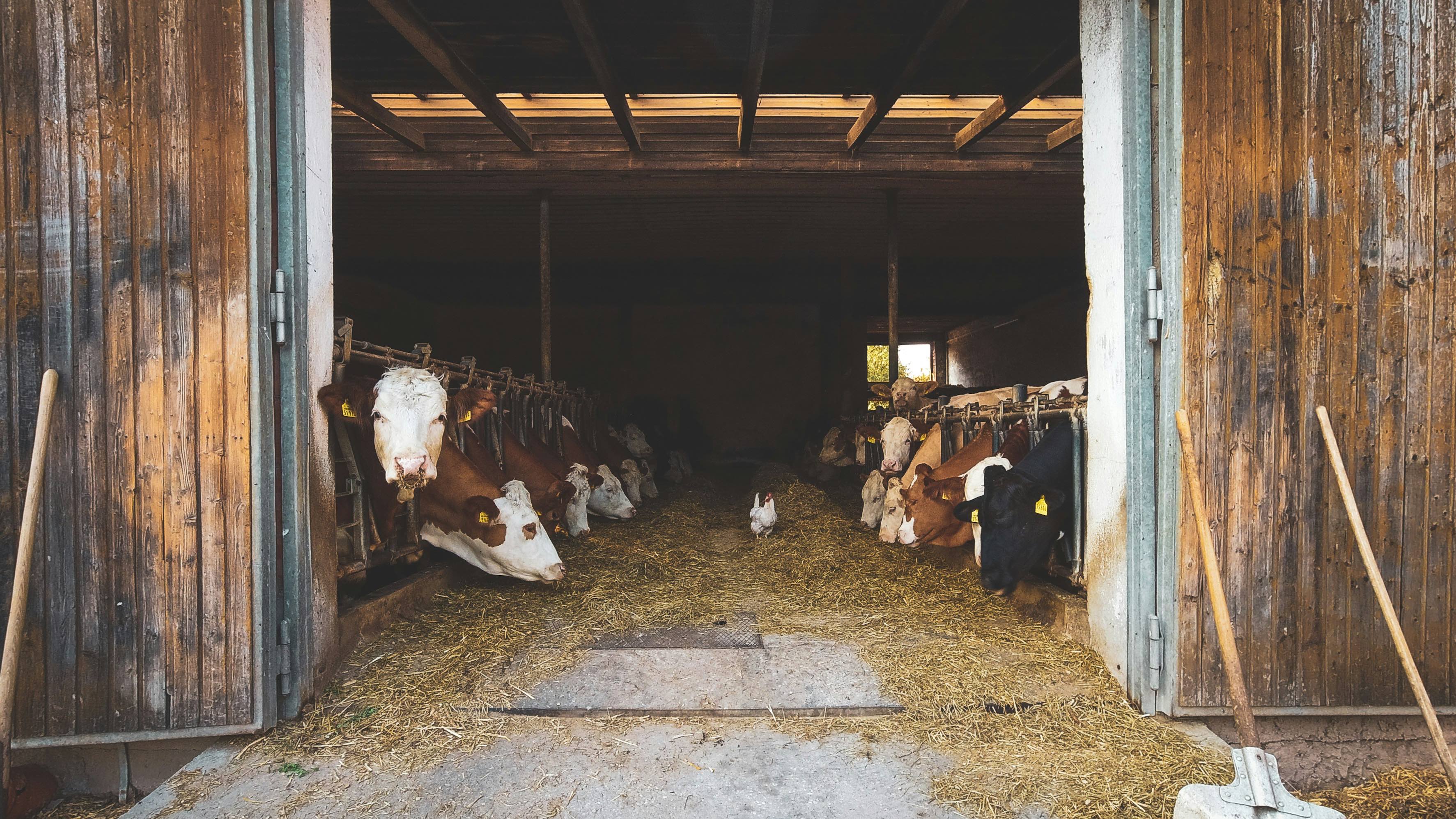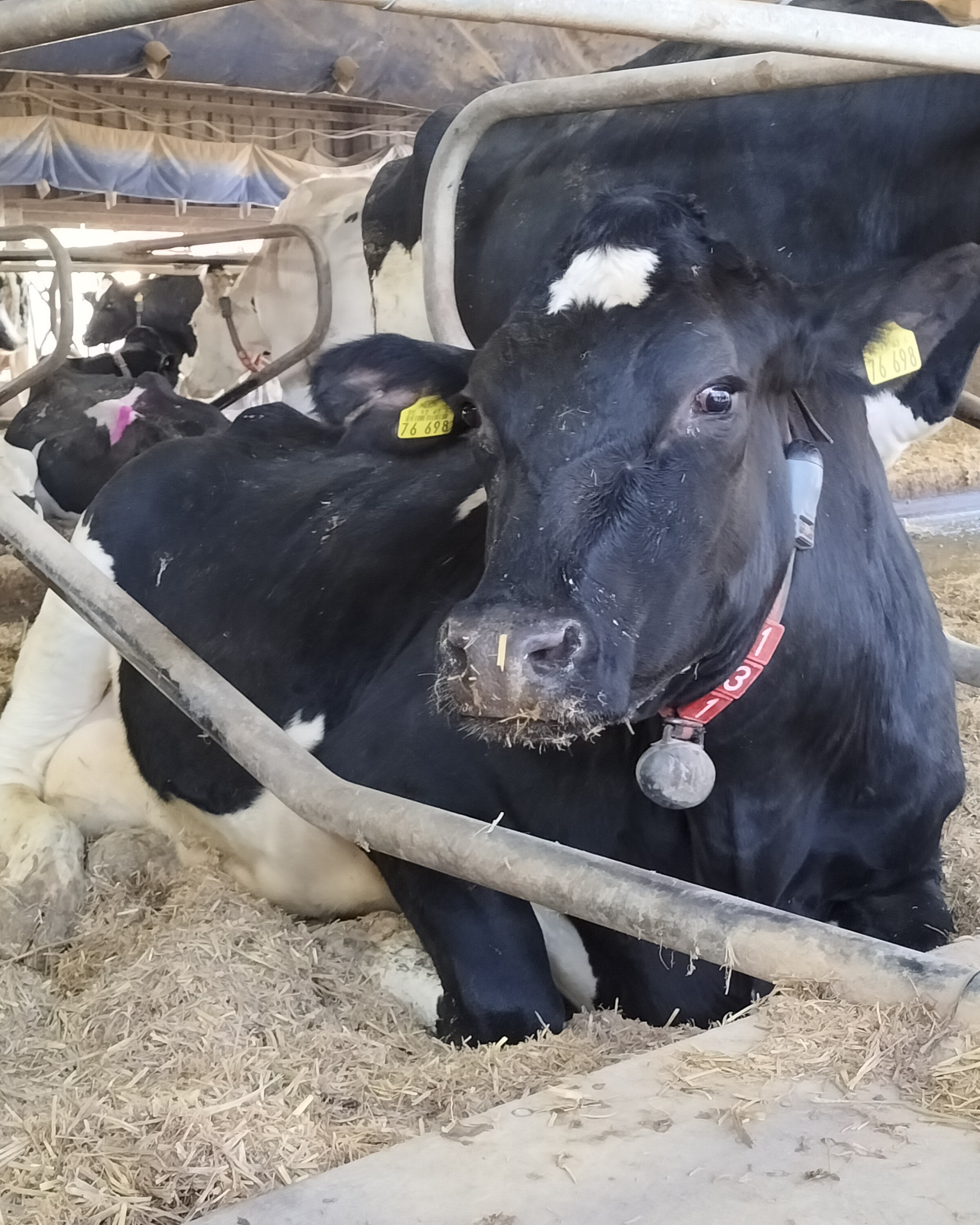How do resistant bacteria spread from animal husbandry into the environment and to humans, how is this being researched at the Leibniz Research Alliance INFECTIONS, and what measures can prevent the spread of resistance? These are the topics covered in episode 5 of the podcast “Mikroben im Visier”.
Industrial animal husbandry is one of the main sources for the development and spread of bacteria that are resistant to antibiotics. This is because large quantities of antibiotics are used to treat sick farm animals such as cattle, pigs, and poultry, but also to prevent disease. Around three quarters of all antibiotics produced are administered to animals. The use of antibiotics leads to the development of resistant bacteria. “These are excreted in animal feces, end up on fields as manure and thus in the environment, or can also reach humans via meat, milk, and eggs,” explains Dr. Tina Kabelitz from the Leibniz Institute for Agricultural Engineering and Bioeconomy (ATB) in Potsdam. The biologist heads the working group “Infections and antimicrobial resistances in livestock” there and supervises several projects in the Leibniz Research Alliance INFECTIONS.
In the latest episode of the podcast “Mikroben im Visier”, the hosts Elisabeth Pfrommer from the Robert Koch Institute and Christian Nehls from the Research Center Borstel, Leibniz Lung Center, spoke with Tina Kabelitz about the spread of resistance and possible countermeasures. They also discussed dust from chicken manure, hygiene in poultry houses, animal welfare and free-range farming systems, and why puddles of water should be avoided in outdoor areas.
Spread of resistance via the air
The air, or more precisely dust particles containing microbes in the air, known as bioaerosols, are a major factor in the spread of pathogens in general and also of resistance. Resistant bacteria or their resistance genes can adhere to dust and be released into the environment as bioaerosols, where they can then be inhaled by humans. “We investigated the extent to which dust generated when chicken manure is spread on fields poses a health risk to the surrounding area, i.e., to humans and animals,” Kabelitz explains. Since chicken manure is naturally dry, it often creates a lot of dust when spread. This dust can still be detected 1,000 meters away from the field. However, at a distance of 400 meters or more, there was no or only a very low health risk to humans and animals.
Kabelitz is not only studying how resistant pathogens from animal husbandry enter the environment, but is also looking for ways to prevent their spread, for example through special husbandry measures. Animal welfare is also a decisive factor here. Animals that have more space and contact with their environment and receive good feed are less stressed and less susceptible to disease, and therefore need fewer antibiotics. “There is also a lot of potential to be more economical and sustainable if you can provide animals with better husbandry conditions,” she emphasizes.
New challenges due to open animal husbandry
Open housing systems also bring new challenges. This applies not only to space requirements and higher costs for construction and maintenance of the facilities, but also to the transmission of diseases. Kabelitz: "These open systems make it much easier for pathogens to enter the barn, but also to travel in the other direction. This facilitates transmission from the barn to the environment, for example through outdoor runs." The expert also explains in the podcast how these risks can be minimized. One measure, for example, is a double fence in pig farming. This prevents contact with wild boars, which are major carriers of African swine fever. “Then a certain area around the barn should be covered with gravel. This prevents the formation of puddles, but also prevents sand and dirt from entering the barn when the animals go inside.” Puddles are not wanted because they are attractive breeding grounds for insects that can transmit resistant pathogens. In addition, puddles also attract wild birds, which can then transmit pathogens such as avian influenza viruses into the water.
The podcast “Mikroben im Visier. Infektionen verstehen, Resistenzen besiegen!” (in German) is available on all popular podcast platforms. Click here to go directly to the fifth episode. https://mikroben-im-visier.podigee.io/5-neue-episode
 INFECTIONS researcher Dr. Tina Kabelitz heads the working group “Infections and Antimicrobial Resistance in Livestock Farming” at the Leibniz Institute for Agricultural Engineering and Bioeconomy (ATB) in Potsdam. Photo: Tina Kabelitz
INFECTIONS researcher Dr. Tina Kabelitz heads the working group “Infections and Antimicrobial Resistance in Livestock Farming” at the Leibniz Institute for Agricultural Engineering and Bioeconomy (ATB) in Potsdam. Photo: Tina Kabelitz




